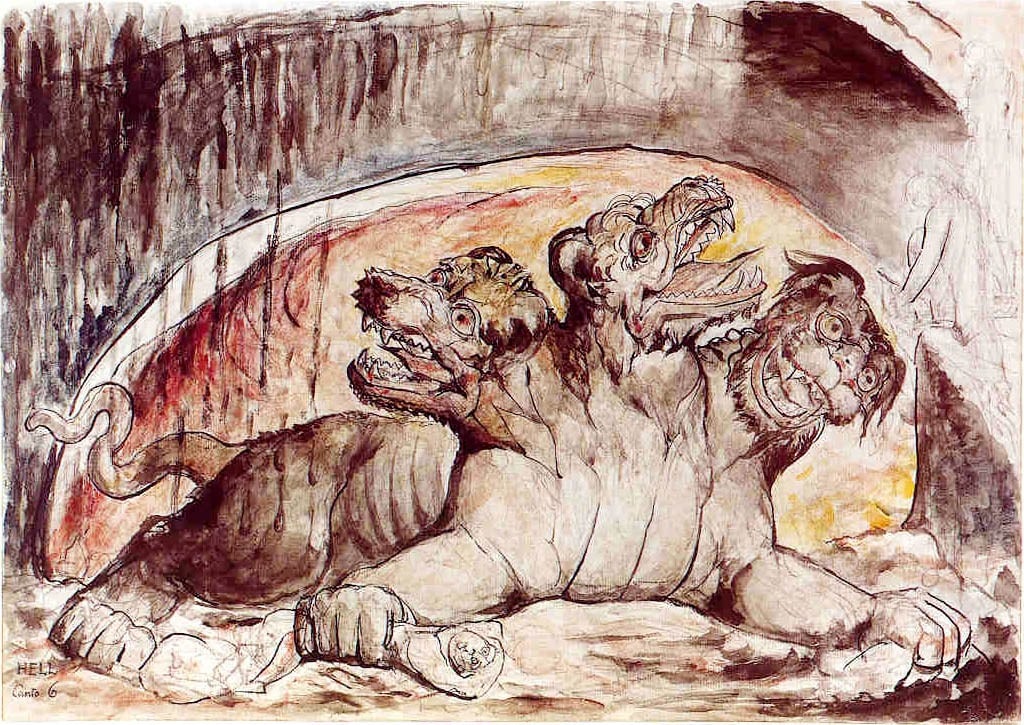
Hades was the underworld of Greek mythology. As such, it was a purely mythical location. Yet despite this, the ancient Greeks associated it with a number of real-world places. This is particularly so regarding its entrance. Ancient Greek texts place the entrance to Hades at a specific location in Greece. Where was this place?
Heracles and the entrance to Hades
In the legend of Heracles engaging on his twelve labors, the final labor required him to go down through the entrance of Hades. He needed to journey into the underworld to capture Cerberus, the hound of Hades who guarded the entrance. He also rescued Theseus while he was there.
This story of Heracles going through the entrance of Hades has contributed considerably to popularizing its location in modern sources. Famously, Heracles went to Cape Taenarum to find the entrance of Hades. This is the tip of the Mani peninsula, the western headland forming the Gulf of Laconia.
However, independent of this story pertaining to Heracles, there are many other records that place the entrance to Hades at this location. This is a tradition which unambiguously goes back at least as far as Pindar, writing in the early fifth century BCE. However, there is also good evidence that it goes back to the time of Homer and Hesiod in the seventh century BCE.
Cape Taenarum
What do we know about Cape Taenarum? For what reason did the ancient Greeks place the entrance to Hades there? One important fact is that this headland is the southernmost part of Greece. Therefore, from a certain perspective, it could very easily be considered ‘the ends of the earth.’
Another notable fact is that Cape Taenarum has a very foreboding appearance. It is not a pleasant part of Greece. Historian and explorer Tim Severin described it in the following way:
“The Mani peninsula is among the bleakest, most foreboding parts of Greece, a raw and blasted ridge of rock which protrudes into the Mediterranean…From the sea the Mani looks grim, a parched dun and grey jumble of steep cliffs, ravines, and the high crest of a central ridge with scarcely a living plant to be seen…Cape Taenarum was a natural end-of-the-world. The place was literally the uttermost place of habitation in mainland Greece.”
In addition, we know that there was an oracle of the dead on Cape Taenarum, further emphasizing its location as the entrance to Hades.
The entrance to Hades in earlier records
Although the earliest record explicitly placing the entrance to Hades at Cape Taenarum appears to be Pindar, there is evidence for this tradition as early as Hesiod and Homer. In Hesiod’s Theogony, the Greek poet wrote about Tartarus. This was a level of the underworld even further down than Hades.
In the Theogony, Hesiod mentions the three guards of Tartarus and places them at “a dank place where are the ends of the huge earth.” He also refers to this as being “where Night and Day draw near and greet one another.”
The first description clearly fits Cape Taenarum. The second description is virtually the same as a line in Homer’s Odyssey, where he describes the land of the Laestrygonians. It is where “the paths of day and night are close together.” Based on a real-life recreation of the journey in the Odyssey, Tim Severin convincingly identified the land of the Laestrygonians with a spot on the southern Mani peninsula.
This evidence indicates that the entrance to Hades (and by extension, Tartarus) was associated with Cape Taenarum at least as early as the time of Hesiod and Homer in the seventh century BCE.
See all the latest news from Greece and the world at Greekreporter.com. Contact our newsroom to report an update or send your story, photos and videos. Follow GR on Google News and subscribe here to our daily email!



